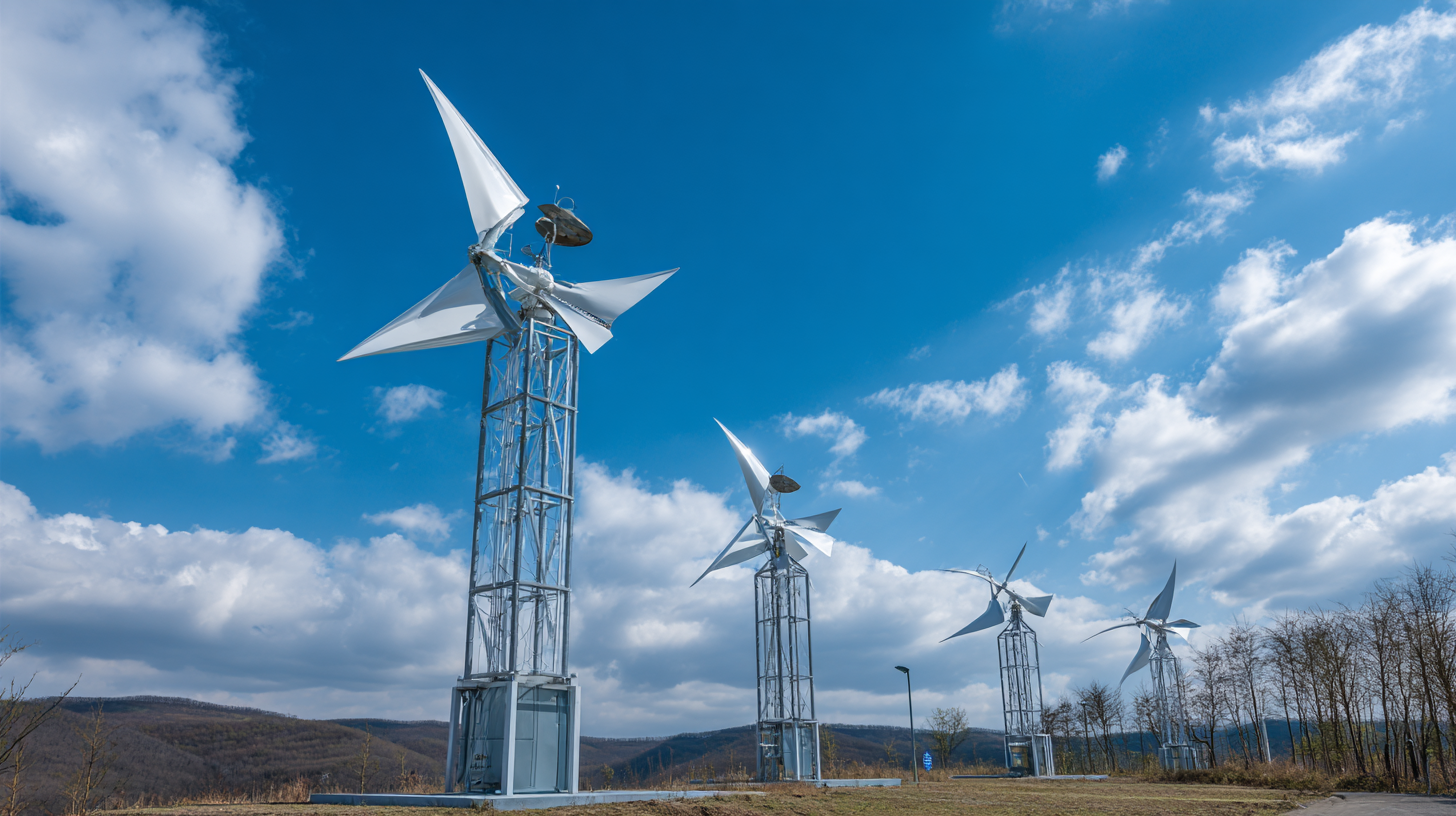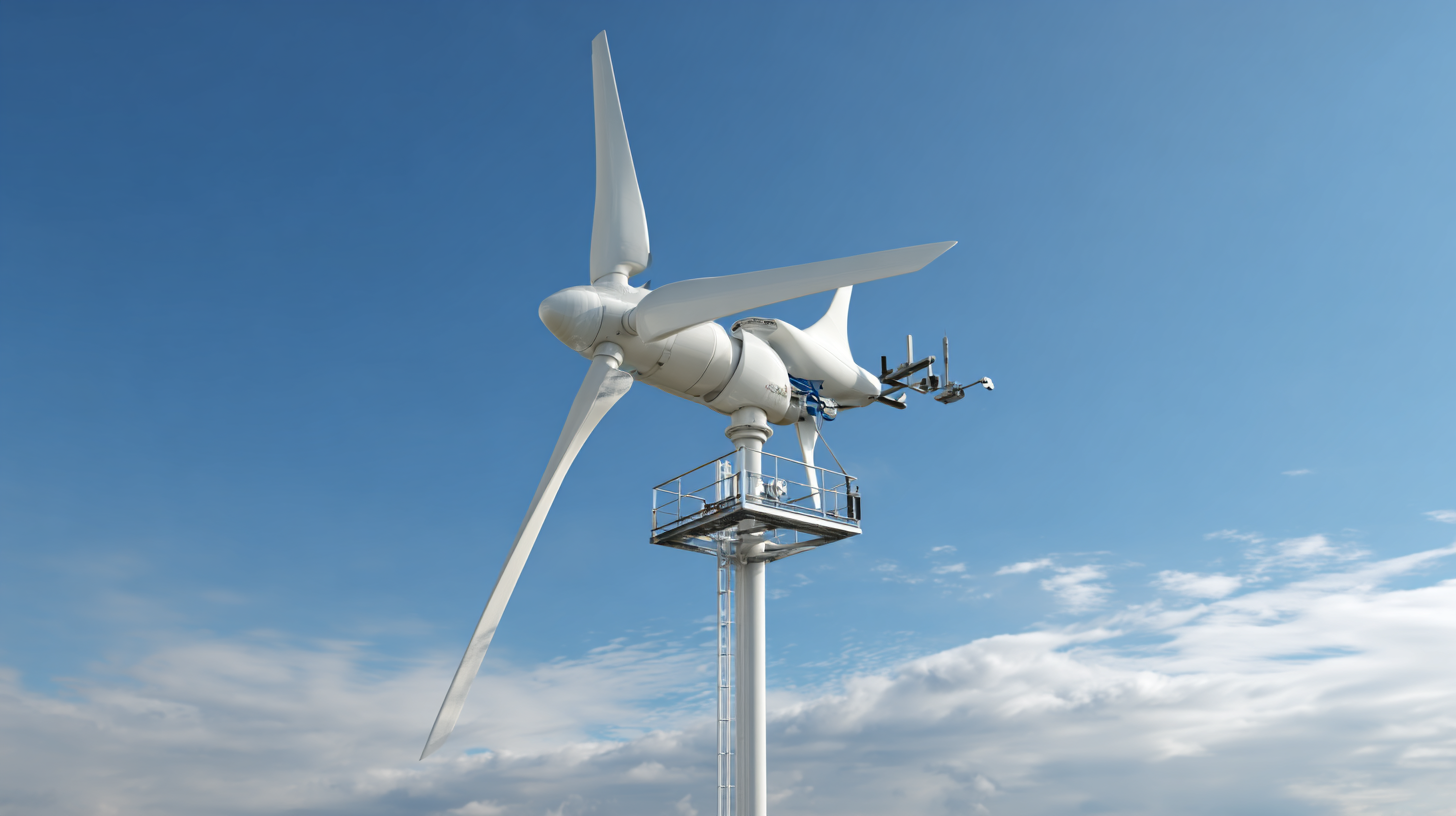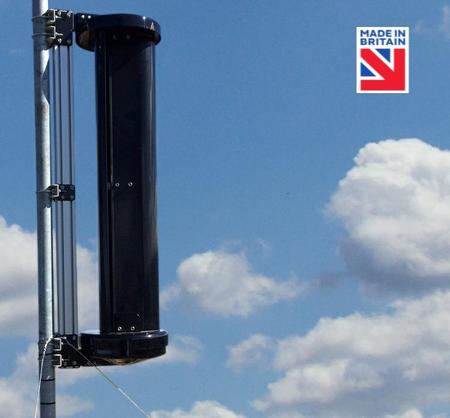Blog
Choosing the Right Manufacturer for Your Best Vertical Axis Wind Turbine Solutions
 As the world shifts towards sustainable energy solutions, the demand for efficient and reliable wind turbine technologies is growing rapidly. According to the Global Wind Energy Council, global installed wind capacity reached over 743 GW in 2020, with vertical axis wind turbines (VAWTs) becoming increasingly popular due to their unique advantages in urban environments and lower maintenance needs. The industry is projected to see further advancements, emphasizing the need for selecting the right manufacturer to ensure optimal performance and longevity of these systems. With the ongoing trends outlined in the "2025 Technology Trends," including the integration of smart technologies and materials science innovations, choosing a proficient manufacturer for your best vertical axis wind turbine solutions is crucial for capitalizing on these advancements and maximizing energy efficiency in your projects.
As the world shifts towards sustainable energy solutions, the demand for efficient and reliable wind turbine technologies is growing rapidly. According to the Global Wind Energy Council, global installed wind capacity reached over 743 GW in 2020, with vertical axis wind turbines (VAWTs) becoming increasingly popular due to their unique advantages in urban environments and lower maintenance needs. The industry is projected to see further advancements, emphasizing the need for selecting the right manufacturer to ensure optimal performance and longevity of these systems. With the ongoing trends outlined in the "2025 Technology Trends," including the integration of smart technologies and materials science innovations, choosing a proficient manufacturer for your best vertical axis wind turbine solutions is crucial for capitalizing on these advancements and maximizing energy efficiency in your projects.
Identifying Common Challenges in Vertical Axis Wind Turbine Manufacturing
When considering the manufacturing process for vertical axis wind turbines (VAWTs), it's essential to identify common challenges that may arise. One key issue is the design and optimization of turbine blades and airfoils, which significantly affect efficiency and performance. Engineers are constantly striving to create innovative designs that enhance lift and reduce drag, but this requires substantial research and development efforts. Additionally, the materials used must be lightweight yet durable, which can complicate the production process.
Another challenge is the manufacturing consistency required to produce reliable VAWTs. Variability in production can lead to performance gaps, making it critical for manufacturers to adhere to strict quality control measures. Furthermore, factors such as the height of the turbine hub play a crucial role in maximizing wind energy capture. Generally, optimizing the hub height—between 24 and 37 meters—aligns with the systematic goal of enhancing wind power generation. Addressing these challenges not only improves the sustainability of wind energy solutions but also supports the transition toward a low-carbon energy future.
Challenges in Vertical Axis Wind Turbine Manufacturing
Evaluating Manufacturer Experience and Expertise in Wind Energy Solutions
When selecting a manufacturer for vertical axis wind turbines, evaluating their experience and expertise in the wind energy sector is crucial. A manufacturer with a robust track record in renewable energy solutions not only offers technical proficiency but also a deep understanding of the regulatory landscape. For instance, the development of offshore renewable energy systems in Austria presents various challenges, including structural integrity and reliability assurance. A seasoned manufacturer will be well-versed in navigating these complexities and will integrate innovative technologies to enhance performance and reduce risks.
Moreover, the current trend towards hybrid renewable energy systems that combine wind and solar technologies highlights the necessity for manufacturers to be at the forefront of technological advancements. This includes their ability to address ongoing challenges and capitalize on emerging opportunities within the industry. By focusing on manufacturers with proven methodologies, such as energy management investments that promote sustainability in smart cities, businesses can ensure they are aligning with partners who prioritize both innovation and environmental integrity. This strategic approach is essential in fostering a resilient supply chain while transitioning towards a more sustainable energy future.

Assessing Quality Control Measures for Vertical Axis Wind Turbines
When selecting a manufacturer for vertical axis wind turbines (VAWTs), quality control measures stand as a critical aspect that cannot be overlooked. A robust quality control system ensures that each turbine component meets the necessary standards and performs optimally under various environmental conditions. Manufacturers that emphasize rigorous testing protocols, such as fatigue testing, aerodynamic analysis, and material inspections, demonstrate a commitment to delivering reliable products. This focus on quality translates to longer lifespans and reduced maintenance costs, which are paramount for both residential and commercial applications.
Moreover, certifications from relevant industry standards can provide additional assurance of a manufacturer’s quality control processes. Look for manufacturers that adhere to ISO standards or have received specific certifications related to wind turbine performance. A transparent quality control process allows potential buyers to assess not only the reliability of the turbines but also the manufacturer’s overall commitment to excellence. Engaging with manufacturers who prioritize quality control can lead to a more informed purchasing decision, ensuring that your investment in wind energy is both efficient and sustainable.
Understanding Material Selection and Its Impact on Turbine Performance
Material selection plays a crucial role in determining the performance and efficiency of vertical axis wind turbines. For instance, the choice between different composite materials can significantly affect the longevity and energy output of the turbine. Recent studies highlight that optimizing the mechanical properties of these materials is essential for enhancing turbine resilience under various environmental conditions, particularly in minimizing erosion and increasing overall efficiency.
When selecting materials for your wind turbine, consider these tips:
- Prioritize materials that offer high tensile strength and impact resistance, as these properties are vital for sustaining harsh weather conditions over time.
- Explore the environmental impact of your material choices, particularly concerning recycling options. Materials that can be effectively recycled not only contribute to sustainability but can also lead to cost savings in the long run.
Moreover, understanding the implications of your material choices on energy production is key. For vertical axis designs, selecting materials that improve aerodynamics and flow configuration can lead to better energy harnessing. This approach not only enhances performance but also aligns with the growing demand for sustainable energy solutions, making it imperative to choose wisely.
Exploring Customer Support and Service Options from Wind Turbine Manufacturers
 When selecting a manufacturer for vertical axis wind turbine solutions, evaluating customer support and service options is crucial. Effective customer service ensures that manufacturers not only provide quality products but are also responsive to post-installation needs. This includes timely maintenance support, warranty services, and availability of spare parts, which can significantly reduce downtime and optimize the performance of wind farms. As the renewable energy sector faces challenges such as efficiency and reliability, robust customer support systems can provide manufacturers a competitive edge.
When selecting a manufacturer for vertical axis wind turbine solutions, evaluating customer support and service options is crucial. Effective customer service ensures that manufacturers not only provide quality products but are also responsive to post-installation needs. This includes timely maintenance support, warranty services, and availability of spare parts, which can significantly reduce downtime and optimize the performance of wind farms. As the renewable energy sector faces challenges such as efficiency and reliability, robust customer support systems can provide manufacturers a competitive edge.
Recent explorations into hybrid renewable energy systems, which combine both solar and wind technologies, highlight the evolving landscape of energy production. The integration of these technologies demands a collaborative approach between manufacturers and their customers. Moreover, the growing emphasis on recycling strategies for retired wind turbine blades has underscored the importance of manufacturers having comprehensive support systems in place. This ensures that they can assist clients not only during the installation phase but also throughout the entire lifecycle of the wind turbines, addressing environmental concerns while enhancing sustainability practices.
Tell us about your project
Our Off-grid experts will come back with recommendations






